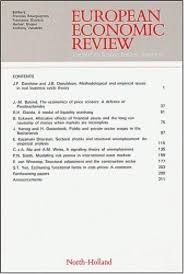
Gerritse, M. (2022). COVID-19 transmission in cities European Economic Review, 150:.
-
Affiliated author
-
Publication year2022
-
JournalEuropean Economic Review
Do cities accelerate COVID-19 transmission? Increased transmission arising from population density prompts spatial policies for financial support and containment, and poorer prospects for recovery. Using daily case counts from over 3,000 counties in the U.S. from February to September 2020, I estimate a compartmental transmission equation. Rational sheltering behavior plausibly varies by location, so I propose two instruments that exploit unanticipated variation in exposure to potential infection. In the first month of local infections, an additional log point of population density raises the expected transmission parameter estimate by around 3%. After the first month, the relation vanishes: density effects occur only in the outbreaks. Public transport, work-from-home jobs and income explain additional variation in transmission but do not account for the density effects. Consistent with location-varying optimal sheltering behavior, I document stronger mobility declines in denser areas, but only after the first month of infections. These results suggest that differences in transmission between cities and other places do not motivate spatial policies for recovery or containment, or poorer prospects after the pandemic.